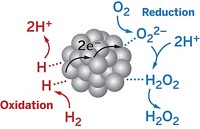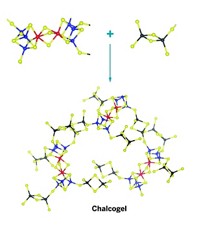Advertisement
Grab your lab coat. Let's get started
Welcome!
Welcome!
Create an account below to get 6 C&EN articles per month, receive newsletters and more - all free.
It seems this is your first time logging in online. Please enter the following information to continue.
As an ACS member you automatically get access to this site. All we need is few more details to create your reading experience.
Not you? Sign in with a different account.
Not you? Sign in with a different account.
ERROR 1
ERROR 1
ERROR 2
ERROR 2
ERROR 2
ERROR 2
ERROR 2
Password and Confirm password must match.
If you have an ACS member number, please enter it here so we can link this account to your membership. (optional)
ERROR 2
ACS values your privacy. By submitting your information, you are gaining access to C&EN and subscribing to our weekly newsletter. We use the information you provide to make your reading experience better, and we will never sell your data to third party members.
Environment
Regenerating Hydrogen-Fuel Storage Material
Hydrazine treatment restores spent polyborazylene to ammonia borane fuel
by Lauren K. Wolf
March 21, 2011
| A version of this story appeared in
Volume 89, Issue 12
Taking a step toward a world powered by hydrogen, rather than predominantly by fossil fuels, researchers from Los Alamos National Laboratory and the University of Alabama have developed a simple method for recycling ammonia borane (NH3BH3), a potential hydrogen-rich fuel (Science, DOI: 10.1126/science.1199003). Although scientists have made recent progress in catalyzing the release of H2 from the storage compound NH3BH3, “a big piece of the puzzle still missing is how to recharge the spent fuel,” says Karen I. Goldberg, a catalysis researcher at the University of Washington. Release of more than two equivalents of H2 from NH3BH3 results in the formation of the spent-fuel compound polyborazylene. By mixing this spent-fuel compound with hydrazine (N2H4) in liquid ammonia at 40 °C for 24 hours, the research team was able to regenerate the NH3BH3 at 92% yield. For the process to become industrially useful, manufacturers would need to address the production, cost, and safety of hydrazine, but this regeneration scheme is an “exciting” development in the field of chemical hydrogen storage, Goldberg says.





Join the conversation
Contact the reporter
Submit a Letter to the Editor for publication
Engage with us on Twitter